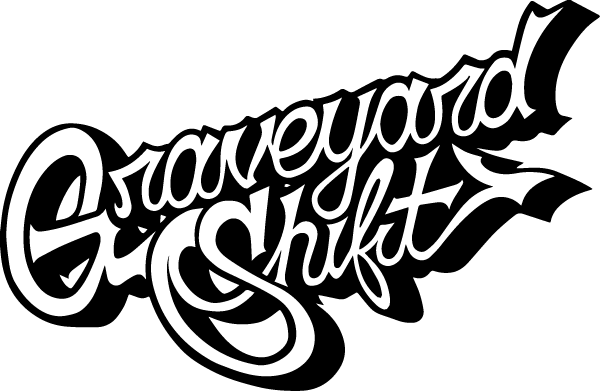Goth Revival Surges in Popularity: Culture Embraces Dark Aesthetic
The resurgence of the goth aesthetic is more than just a fashion statement; it represents a metamorphosis of identity and culture. Once sidelined as a niche, gothic trends are now experiencing a powerful revival, making waves across mainstream fashion, music, and art. This article delves into the rebirth of goth culture, exploring its modern interpretation and impact on contemporary society.
The Roots of Goth Culture
Goth culture originated in the late 1970s and early 1980s as a subgenre of punk rock, characterized by its distinctive dark, mysterious, and brooding aesthetic. Bands like Siouxsie and the Banshees, Bauhaus, and The Cure played a pivotal role in shaping the sonic and visual landscape of goth. Fast forward to today, the revival of this darkly romantic vibe is capturing the collective imagination once again.
Modern Interpretations of Goth Fashion
Goth fashion has always been more than black clothing and heavy eyeliner. The contemporary goth revival blends traditional elements with modern twists. Here are some ways the aesthetic is reinterpreted:
- Luxury Goth: High-end designers like Alexander McQueen and Rick Owens have seamlessly integrated goth-inspired elements into their collections, infusing dark elegance with luxurious materials.
- Streetwear Influence: Brands like Demobaza and Y-3 have modernized goth fashion by fusing it with urban street styles, making it accessible to a broader audience.
- Sustainable Choices: With growing awareness about sustainability, eco-friendly goth fashion is gaining traction. Ethical brands create pieces that are both environmentally conscious and fashion-forward.
The Role of Social Media
Social media platforms like Instagram, TikTok, and Pinterest have played a crucial role in the goth revival. Influencers and digital creators showcase their unique takes on goth fashion, promoting eclectic styles to their vast audiences. Platforms like these act as virtual catwalks, where experimentation is encouraged, and community building is integral.
Music as the Soul of Goth
Music remains a cornerstone of goth culture. The revival isn’t just about fashion; it’s an entire lifestyle. Contemporary musicians are combining classic goth sounds with modern production techniques, creating a fusion that resonates with fans both old and new. Here's a look at some leading figures in modern goth music:
- Artists like Chelsea Wolfe and Twin Temple are infusing traditional goth themes with modern genres like doom metal and darkwave.
- Virtual concerts and live streams have allowed goth bands to reach global audiences, breaking geographical boundaries.
Goth Aesthetic in Visual Art and Media
Visual arts, film, and media are also embracing this dark aesthetic. The presence of goth elements can be seen in the cinematic direction of TV series and movies. For example:
- Tim Burton's signature dark graphic style continues to influence a new generation of visual artists.
- Netflix’s series like “The Chilling Adventures of Sabrina” and “Stranger Things” prominently feature gothic flair, introducing it to younger audiences.
Why Now? The Cultural Shift
The resurgence of goth culture coincides with larger cultural and social shifts. Here’s why it's making such a dramatic comeback:
- Emotional Expression: In an increasingly uncertain world, people find solace in goth culture as a means of expressing emotions and confronting darkness.
- Inclusivity and Diversity: Modern goth culture is significantly more inclusive, embracing diversity in race, gender, and sexuality.
- Aesthetic Escapism: The allure of gothic aesthetics offers an appealing escape from the mundane, allowing creative expression and identity experimentation.
Impact on the Fashion Industry
The goth revival is influencing mainstream fashion in unprecedented ways:
- Retail Brands: Even mainstream brands like Zara and H&M are incorporating gothic elements into their seasonal collections.
- Runway Trends: High fashion events such as New York and London Fashion Week have seen increased gothic-inspired collections.
- Pop Culture Influence: Celebrities like Billie Eilish and Timothée Chalamet are often seen sporting goth-inspired outfits, pushing the trend further into the spotlight.
Looking Ahead: The Future of Gothic Revival
As we look toward the future, the goth revival shows no signs of waning. The continued blending of old and new, traditional and contemporary, is likely to drive the evolution of this fascinating subculture. With technology enabling greater community connections and creative collaborations, the gothic aesthetic stands to become an even more influential force across various cultural domains.
The goth revival is a testament to the enduring appeal of dark aesthetics, emotional depth, and artistic experimentation. As this movement continues to grow, it will undoubtedly leave a lasting impact on fashion, music, art, and beyond.
Final Thoughts
The reinvigorated goth scene has transcended its niche origins to become a defining cultural trend of the modern era. By embracing this dark aesthetic, people are finding new means of expression, empowerment, and connection. Whether through fashion, music, or visual art, the gothic revival is a powerful narrative that continues to captivate and inspire.

